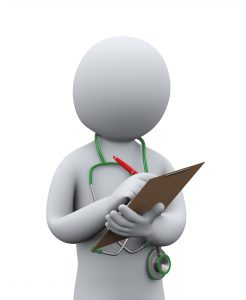When taking a history about pain it may be helpful to use the acronym COLDERR:
- Character: description of sensation of the pain (dull, sharp, aching, burning, tingling, etc.).
- Onset: when did it start? Were there any recipitants or triggers?
- Location: where does it hurt? Is the pain unilateral, bilateral, radiating?

- Duration: constant versus intermittent in nature, does it change during the day?
- Exacerbation: which factors make it worse?
- Relief: what makes it better, including medications, mechanical treatments, posture change?
- Radiation: pattern of spread from its origin.
Examination:
- Observation: of pain related behaviour, posture etc.
- Musculoskeletal examination: check for subluxation, dislocation, deformity/swelling, passive, active and resisted range of movement, signs of inflammation.
- Neurological examination: assess sensitivity, sensation, tone/spasticity, power, function.
- Assess for referred pain: e.g. cervical spine examination in upper limb pain, lumbosacral spine examination in lower limb pain.
- In situations of headache, consider cranial nerve abnormalities as well as ENT, dental, ocular and cervical spine examination.
- Abdominal or chest examination where appropriate.